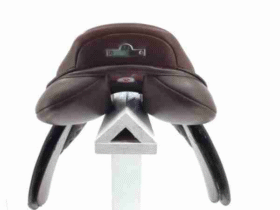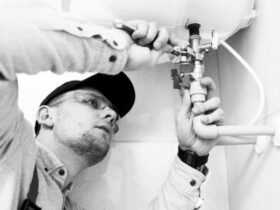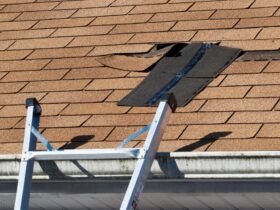Hidden water leaks in your home can cause significant damage and lead to costly repairs if not addressed promptly. These leaks often go unnoticed behind walls, floors, or other concealed areas. Detecting and fixing hidden water leaks early can save homeowners from extensive damage and high water bills. We will explore methods to detect hidden water leaks and provide steps to fix them, ensuring your home remains safe and water-efficient. Plumbers from Berger Nelson Construction possess specialized tools and expertise to efficiently locate and repair hidden water leaks, offering homeowners peace of mind and expert solutions for safeguarding their property.
Methods to detect hidden water leaks
1. Signs of Hidden Water Leaks
Hidden water leaks often present subtle signs that homeowners should watch for. One of the first indicators is an unexplained increase in water bills. If your water usage has not changed, but your bills have spiked, there may be a leak somewhere in your home. Other signs include damp or discolored spots on walls, ceilings, or floors, which suggest water is seeping into these areas. A persistent musty odor can also indicate mold growth due to hidden moisture. Hearing the sound of running water when all faucets and appliances are turned off is another clue that there may be a hidden leak.
2. Checking the Water Meter
One of the most reliable methods to detect hidden water leaks is checking your water meter. Start by turning off all water-using appliances and fixtures in your home, ensuring no water is being used. Locate your water meter, typically found near the curb or in a basement or utility area. Take note of the current reading, then wait for about an hour without using any water. After the waiting period, recheck the meter. If the reading has changed, it indicates water is being used somewhere, likely due to a hidden leak.
3. Inspecting Plumbing Fixtures and Appliances
Inspecting plumbing fixtures and appliances can help identify hidden leaks. Check under sinks, toilets, and nearby appliances like dishwashers and washing machines for any signs of water accumulation or moisture. Look for corrosion or mineral deposits on pipes and fittings, indicating a slow leak. Additionally, ensure that all connections and hoses are secure and free of cracks or damage. Regularly inspecting these areas can help catch leaks early before they cause significant damage.
4. Using Leak Detection Devices
Leak detection devices are valuable tools for identifying hidden water leaks. These devices use various technologies, such as acoustic sensors, moisture detectors, and infrared cameras, to locate leaks behind walls or under floors. Acoustic sensors detect the sound of water escaping from pipes, while moisture detectors sense elevated moisture levels in materials. Infrared cameras can visualize temperature differences caused by water leaks, showing cold spots where water is present. Homeowners can purchase these devices for personal use or hire professionals to conduct a thorough inspection using advanced leak detection equipment.
5. Fixing Hidden Water Leaks
Once a hidden water leak is detected, it is crucial to fix it promptly to prevent further damage. The method of repair depends on the location and severity of the leak. Applying pipe repair tape or a pipe clamp can provide a temporary fix for minor leaks until a permanent solution is implemented. For more significant leaks or damaged pipes, cutting out the affected section and replacing it with a new pipe is often necessary. In some cases, hiring a professional plumber to perform the repairs is the safest and most effective approach, particularly for leaks behind walls or under floors.
6. Preventing Future Leaks
Preventing future leaks involves regular maintenance and proactive measures. Insulate exposed pipes to protect them from freezing and bursting during cold weather. Regularly inspect and maintain plumbing fixtures and appliances, replacing worn-out hoses and fittings. Installing water softeners can reduce the risk of corrosion and buildup in pipes, extending their lifespan. Additionally, consider installing a whole-house leak detection system that can monitor water usage and alert you to potential leaks in real time. By taking these preventive steps, homeowners can minimize the risk of hidden water leaks and protect their property from water damage.
7. Monitoring Water Pressure
Excessively high water pressure can lead to leaks and damage to plumbing fixtures and appliances. It is essential to monitor and regulate the water pressure in your home. Use a pressure gauge to check the water pressure at an outdoor faucet. The ideal range is between 40 and 60 psi. Consider installing a pressure regulator to maintain safe levels if the pressure exceeds this range. Regularly checking and adjusting water pressure can prevent stress on pipes and reduce the likelihood of leaks.
Detecting and fixing hidden water leaks in your home is crucial for preventing extensive damage and costly repairs. You can identify leaks early by being aware of the signs of hidden leaks, regularly checking your water meter, inspecting plumbing fixtures, and using leak detection devices. Promptly fixing leaks and taking preventive measures, such as regular maintenance and monitoring water pressure, can help protect your home from water damage. These steps ensure a safe, efficient, and water-tight home, giving homeowners peace of mind and protecting their investment.
Read Also:- Furniture Styles for Calgary Homes















Leave a Reply